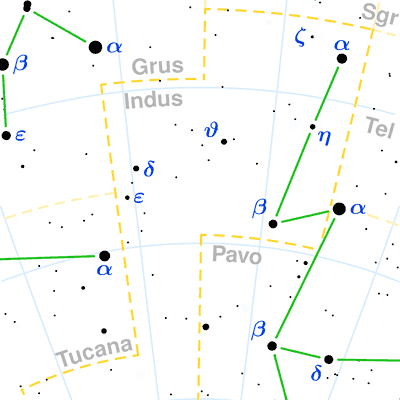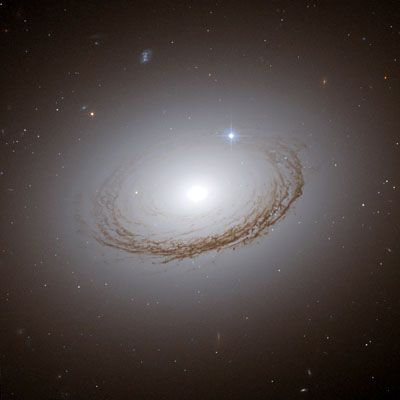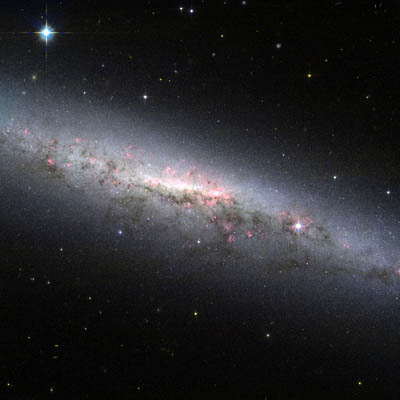Pronunciation:
(IN-dus)Abbreviation:
IndGenitive:
IndiRight Ascension:
21 hoursDeclination:
-55 degreesArea in Square Degrees:
294Crosses Meridian:
9 PM, September 25Visible Between Latitudes:
25 and -90 degreesThe constellation Indus, the Indian, is located in the southern hemisphere of the sky. It is completely visible at latitudes south of 15 degrees from July through September. It is a small constellation, filling 294 degrees of the sky. This ranks it 49th in size among the 88 constellation in the night sky. It is bordered by Grus, Microscopium, Octans, Pavo, Sagittarius, Telescopium and Tucana.
There are no myths associated with Indus. This southern constellation was one of 12 constellations created by the Dutch astronomer Petrus Plancius based on the observations of Dutch navigators in the 16th century. It was first depicted in Johann Bayer’s star atlas which was published in 1603. It was depicted as naked male figure holding arrows in both hands. It is believed to represent the indigenous people that explorers encountered during their travels to the East Indies, Madagascar, and southern Africa.

points of interest below © Sea and Sky

© Torsten Bronger CC BY-SA 3.0
Beta Indi
Delta Indi
Theta Indi
Eta Indi
N/A
N/A
N/A
N/A
Orange Giant Star
Binary Star System
Double Star
White Subgiant Star
3.65
4.40
4.40
4.52
This constellation is contains only two stars brighter than magnitude 4. The Persian is the brightest star with a visual magnitude of 3.11. It is an orange giant star located over 98 light years from Earth. The second brightest star is Beta Indi with a magnitude of 3.65. It is also an orange giant star that lies approximately 600 light years from our solar system. The third brightest star is Delta Indi with a magnitude of 4.40. It is a binary star system located approximately 144 light years away.
Indus contains no Messier objects but does contain a few notable deep-sky objects. NGC 7049 is a lenticular galaxy located about 150,000 light years from Earth. It features a prominent dust ring that stands out against the glow of the galaxy’s stars. NGC 7090 is a beautiful edge-on spiral galaxy that features prominent dust lanes and nebulas. There are several other dim galaxies in this constellation, but they can only be seen in large telescopes.

the Hubble Space Telescope

the Hubble Space Telescope



